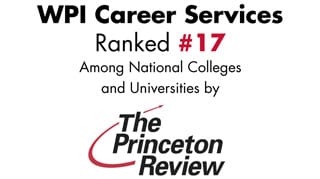Economy Report: Recruiting Trends for 2016-2017 and the Presidential Election
On September 21 we welcomed 200 companies to our Fall Career Fair; an additional 23 were placed on a waitlist and were ultimately offered the opportunity to sign up early for the Spring Fair. While we hate to turn away our employer partners, we were excited by the implication that this indicated strong hiring and recruiting opportunities for our 2017 graduates.
 The release of the Collegiate Employment Research Institute and Michigan State University’s Recruiting Trends 2016-2017 confirmed these hopes—after recording 4,350 responses, there’s expected to be an overall continued increase in hiring across 2017 university graduates for the upcoming year, with a projection of a 23% increase across all degree levels, and only 3% of respondents indicating zero projected hires for the upcoming year. While the labor market for bachelor’s-level candidates is expected to forge on for a seventh consecutive year, the growth is also being challenged by MBA, master’s, and associate’s degree holders.
The release of the Collegiate Employment Research Institute and Michigan State University’s Recruiting Trends 2016-2017 confirmed these hopes—after recording 4,350 responses, there’s expected to be an overall continued increase in hiring across 2017 university graduates for the upcoming year, with a projection of a 23% increase across all degree levels, and only 3% of respondents indicating zero projected hires for the upcoming year. While the labor market for bachelor’s-level candidates is expected to forge on for a seventh consecutive year, the growth is also being challenged by MBA, master’s, and associate’s degree holders.
The positive-looking job market will benefit those graduates who have a well-rounded portfolio with high academic marks, past experience, and strong job search abilities, particularly in competitive industries where demand outweighs supply. The report specifically called out engineering, computer science, and accounting as disciplines where employers are competing heavily for talent. We can attest to this fact due to our high Career Fair attendance and the high success rates of our students—it’s not surprising for some students to have full-time offers by Thanksgiving break.
Outside of the hiring sphere, a majority of employers also indicated an expectation for starting salaries to increase next year—4-5% on average—as a way to attract top candidates in this “very good” labor situation.
Business cycles are known to make corrections and these figures could be affected by a number of factors. One such factor could be the presidential election, and it’s always interesting to look at how the economy interfaces with this important event. Over the past 72 years, there have only been three instances where the stock market returns three months before an election did not predict the winner of the presidential race. The theory states that if stocks rise during this time, voters feel secure in the current environment and are more likely to elect the incumbent party. If the economy and markets are sliding, voters seek change and new direction.
Since 1944, when stocks rose three months before the election, the incumbent party won the presidency 82% of the time. If stocks were down, the challenging party won 86% of the time. As of October 21, the S&P 500 Index was trading down 29 points from August 1, indicating a Trump win. While this is solely based on stock market figures, theorists and statisticians incorporating multiple economic factors feel that the generally positive state of the economy will lead to a Clinton win. Whether the forecasting models are accurate or not, the economy plays an important role in elections and vice versa, and we should anticipate an effect on hiring for 2017.
Tags: Career Fair



